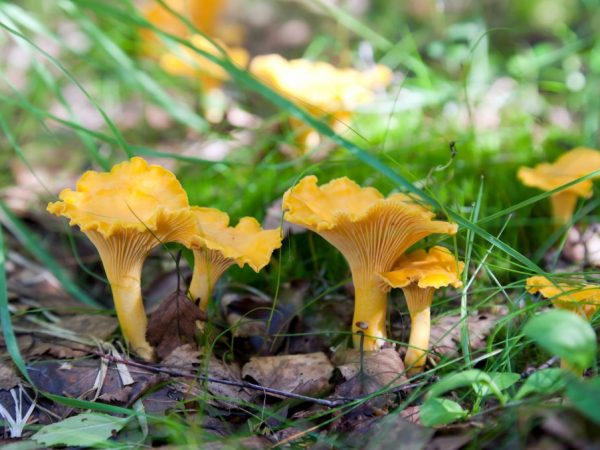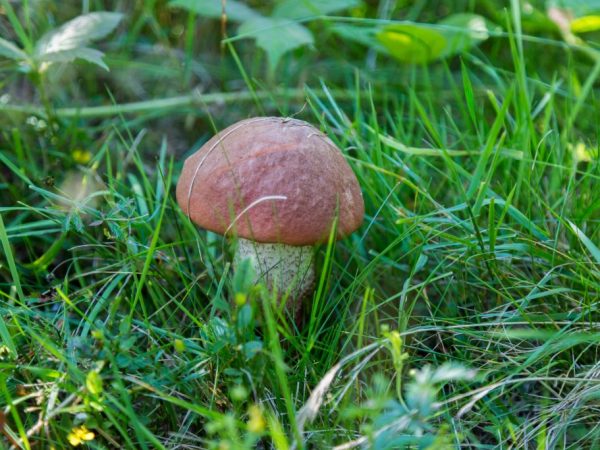Types of mushrooms in the Kaliningrad region
There are different types of mushrooms in the Kaliningrad region. When going for mushrooms, it is important to remember the rules for a successful trip. You need to collect them carefully, immediately examining them on the spot, so as not to inadvertently capture a poisonous fly agaric or a pale toadstool.

Types of mushrooms in the Kaliningrad region
Types of mushrooms and their description
Noble mushrooms of the Kaliningrad region are found along with others, less refined. The most common edible species here are:
- Ryzhiki: these mushrooms have a unique taste. There are types of r. spruce and p. pine. They have orange legs and caps about 17 cm in diameter, funnel-shaped. They grow on hillocks near firs and pines. They are massively harvested in August.
Irina Selyutina (Biologist):
Ryzhik is a generalized name for a whole group of species belonging to the genus Mlechnik. However, these mushrooms are distinguished from other representatives of the genus by the presence of a pleasant-tasting milky juice colored in shades of red. The beta-carotene present in the pulp - the precursor of vitamin A. According to A.N.Shivrina (1965), the antibiotic lactarioviolin was isolated from the mushroom and close to it Lactarius guifluus with red milk juice. suppress the growth of most bacteria (including tuberculosis).
Please note! Very often, novice mushroom pickers confuse saffron milk caps with pink fluff - a conditionally edible species, less valuable from the point of view of nutritional value. You can distinguish these mushrooms by the white milky juice that does not change its color upon contact with air and the highly pubescent surface of the cap of the wave.
- White, or boletus: "Kings" of mushroom places in the Kaliningrad region, thanks to its exquisite taste and rich aroma. They have a brown hat and a thick white leg. Found in birch forests, spruce forests, pine forests.
- White milk mushrooms and black: the best option for salting. Small, milky-white with a yellowish tint (white) or dark olive (black) concave caps with characteristic rings, which may not be seen very well. They love the edges of coniferous forests, under fallen leaves or needles.
- Brown and boletus boletus (boletus): boletus has a white, brown or yellowish cap. The leg is white. Boletus boletuses have a bright orange hat, there is also a brown one, and a gray leg. They grow at the beginning of the forest, along paths and in open places.
- Butterlets: they are often found on the map of mushroom places of the Kaliningrad region. Hats in edible species are from gray-yellow to red-brown in color, in damp weather - with a touch of mucus. They prefer clearings with tall grasses, forest paths.
- Flywheels: these mushrooms growing in the Kaliningrad region belong to several types: green moss, m. yellow-brown and m. chestnut or Polish mushroom. Most often they grow in conifers and thickets of deciduous trees. The best is the Polish mushroom, which has a smooth brown cap and a yellowish powerful leg.
- Chanterelles: bright mushrooms on a high leg, having a wavy concave cap, which so smoothly passes into the leg that it is almost impossible to find the place of their joining. They are collected in coniferous and mixed forests.
- Russula: species have caps of various colors. Some are suitable to be eaten raw with salt. However, some species have a pungent taste. That is why they are soaked before cooking. They prefer mixed forests and marshlands.
- Honey mushrooms: surprisingly tasty mushrooms growing in groups have many similar inedible counterparts. Inedibles are distinguished by an unpleasant odor and a bright color of a cap with greenish plates. Edibles are of two types - summer and autumn. Most often they grow near stumps and weak, diseased trees.
Irina Selyutina (Biologist):
Behind the name "autumn mushroom" hides two species, outwardly almost indistinguishable from each other (all the differences are at the microscopic level): autumn honey mushroom (Armillaria mellea) and northern autumn mushroom (Armillaria borealis). These edible mushrooms from different mushroom pickers and culinary specialists receive different assessments of their taste qualities - from the expression "mediocrity" to the enthusiastic exclamation "divine!" When picking mushrooms, it is important to choose only young specimens, because they can use both a hat and a leg, and when collecting large (mature) ones, it is better to take only a hat (by this time the legs become almost woody).
Mushrooms grow in the Kaliningrad region and are poisonous. The most striking representative is the red fly agaric. It is a well-known poisonous mushroom that causes severe food poisoning. Mushroom pickers know: if the whites went, it means that fly agarics are somewhere nearby. In these places, they also find a dangerous pale toadstool, similar in description to russula.
How to choose a mushroom spot
To choose mushroom places in the Kaliningrad region for the upcoming "quiet hunt", you should decide on your personal preferences. Places are selected in which natural conditions - soil, forest density, tree species contribute to the growth of the selected species. Borovik will be where conifers predominate and on the edges of the forest.

The yield of mushrooms is influenced by weather conditions
Aspen and brown boletus, on the contrary, prefer small-wooded dense thickets of birch and aspen, where the distance between trees does not exceed a meter, otherwise the mushrooms will not receive the portions of light and moisture necessary for normal development. Butterlets and mushrooms prefer pine forests, and chanterelles, honey mushrooms and milk mushrooms are found everywhere.
The season in which they go to pick mushrooms is also important. The periods of their mass collection vary slightly. In addition, the weather conditions of a specific period are taken into account. In dry summers, there will be more of them in shady ravines, lowlands and thicker grasses, where night moisture lasts longer during the day. And on wet rainy days they are looking for in the glades, open, rare oak forests and glades, where the sun warms up more.
It is necessary to start picking mushrooms in the early morning, when there is no large influx of mushroom pickers, preferably after a rainy wet period, in order to allow young fruit bodies to grow.
Mushroom map of the Kaliningrad region
The map of mushroom spots in the Kaliningrad region includes 4 main zones:
- Neman lowland: known for black alder, which is favorable for the growth of cap species. In addition, in the forestry of the zone there are silty-boggy, peat-boggy, podzolic soils, which contribute to the good development of the mycelium, and hence the appearance of numerous fruit bodies.
- Krasnoznamensk timber industry enterprise and Nesterovskiy mekhleskhoz: with a varied topography of the soil with the content of sand, gravel and boulders, it is predominantly pine. In the lowlands, mixed forests are widespread, in which the variety of mushrooms will delight even the sophisticated amateur.
- Curonian and Baltic forestry enterprises: located near the Baltic Sea on sandy soils. Frequent sea winds promote the growth of pines, birches and black alder.People come here for mushrooms, chanterelles and greenfinches.
- Other forests of the Kaliningrad region: they consist of mixed spruce and birch lands, belong to the fourth zone, including the ash and oak trees growing here.
They also go to pick mushrooms in Novoderevensky and Bolshakovsky forests... Enjoys a good reputation Baltic Spit and Ladushkin Forest... Lovers of milk mushrooms go there. Shipovsky forest near Kaliningrad, will delight the boletus and strong boletus. And for lovers of long-distance travel, it is suitable Vyshtynetskoe lake - there they promise the presence of boletus.
Conclusion
There are many mushroom places in the Kaliningrad region, and there are various mushrooms. Cut them neatly and put them in a basket with the hats down, while only the hats are collected from the large ones.



